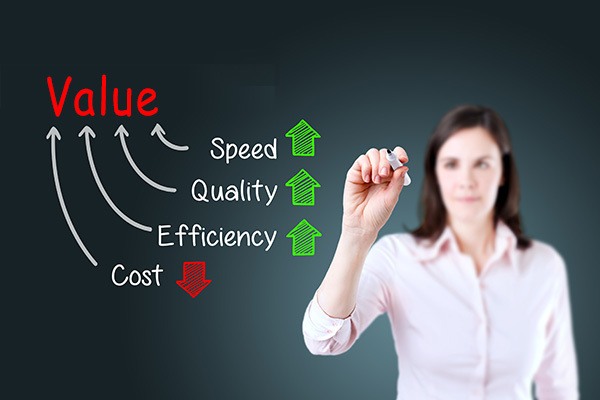
Losing Focus on Value in Value-Based Purchasing
When it comes to discussions about healthcare reimbursement and costs, “Value-Based Purchasing” is a term that gets thrown around quite a bit these days. In fact, many experts say it’s going to be the future for healthcare organizations.
Due to its growing use in hospitals and regional clinics, Value-Based Purchasing (VBP) has become a buzzword in healthcare. But as often happens with buzzwords, the original meaning becomes less salient to most people than their feelings and experiences with the subject. What exactly is the goal of value-based purchasing?
The Goal of Value-Based Purchasing
On paper, the methodology of VBP is simple: pay providers for quality and value, not just volume. Hold healthcare organizations accountable for both the quality and cost of the care they deliver and reward the best-performing providers.
The goal of VBP is to facilitate a high-level of care that is both safe and efficient. To reduce medical errors, lower the rate of accidents, achieve better patient outcomes, and maximize financial rewards. In an ideal world, clinics and hospitals will operate at optimal effectiveness and efficiency – resulting in lower prices for both patient and payor.
The Reality of Value-Based Purchasing
Organizations work hard, month after month, to achieve this noble “value proposition”. But the everyday reality of succeeding for their organization in a Value-Based Purchasing program is far from simple.
Value-based care goals come with their own elaborate set of rules, metrics, benchmarks, reimbursement adjustment tables, and a million other things. The delay between capturing data and applying benchmarks to a provider’s reimbursement is significant. It’s all too easy for care providers to become immersed in the administrative minutiae of VBP and lose track of the program’s highest goal – better value for patients.
Therefore, whether you’re a front-line staffer or a top-level executive, it’s important to circle back to one basic question: “Does what we’re doing truly improve value?”. If the answer is “No” or, (as is often the case), unclear – then it’s time to evaluate the effectiveness of the task, process or tool on a fundamental level.
Getting Back to the Value in VBP
In order to shift the focus back to “value” in a value-based purchasing system, major changes need to occur in how departments think and work together.
Of course, a VBP-participating provider organization cannot completely ignore the necessary mechanics of the program without losing the reimbursement boosts it can provide. However, when the staff and management can focus on actual performance across the majority of their care-delivery operation, on a real-time basis, VBP success becomes a byproduct of genuinely improved clinical performance across the board.
As we see it, there are some real opportunities for core value improvement in the fundamental way the quality improvement operation is executed. For example:
- Change the focus from reporting to insight, learning, and change. Lengthy and detailed reports do not improve anything. Make the improvement process the primary core function, make it effective and efficient, and reverse engineer the way the capture, processing, communication, and work on that related information is built to optimize improvement in Quality and Safety.
- Involve executives by giving them the right lens on the subject matter. ActionCue’s event reports capture the facts and circumstances surrounding each adverse event, while the performance measures and analytics capture a big, coherent picture of the operations. Only by replacing the “too many moving parts” nature of Quality-safety with a complete story can we hope to provide proper executive buy-in and leaders to improve evidence-based outcomes and quality measures.
- Get away from paper as inputs or outputs. Paper is static information that takes human effort to move, change and work on. ActionCue CI gives uses a workbench to support information work and receive actionable insights in a dynamic way.
- Don’t be afraid to re-invent the process. Stop throwing more human effort at things that aren’t getting results, just because it’s “the way we’ve always done it.” That includes classes and meetings, that soon fade and impact the work far less than equipping the staff to actually work differently.
- Think outside the box. The “mandated” way is not always the best way! Don’t let a mandated task, step or artifact chain the organization to an outdated, suboptimal overall process. Look for new and fundamentally more efficient processes that serve goal attainment, even if those small mandated tasks, that deliver less value, seem redundant.
Remember, the most precious things your team produces in running your operation and delivering care are actionable insights to improving value. If you’re working more and getting less of that, CHANGE. Because the goal, after all, is value. Value for patients and value for care providers.

